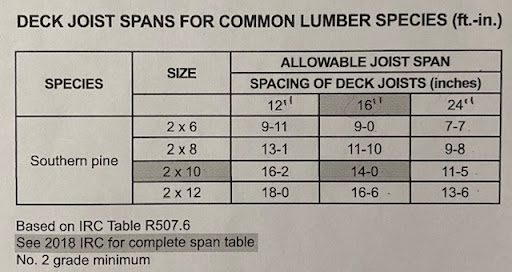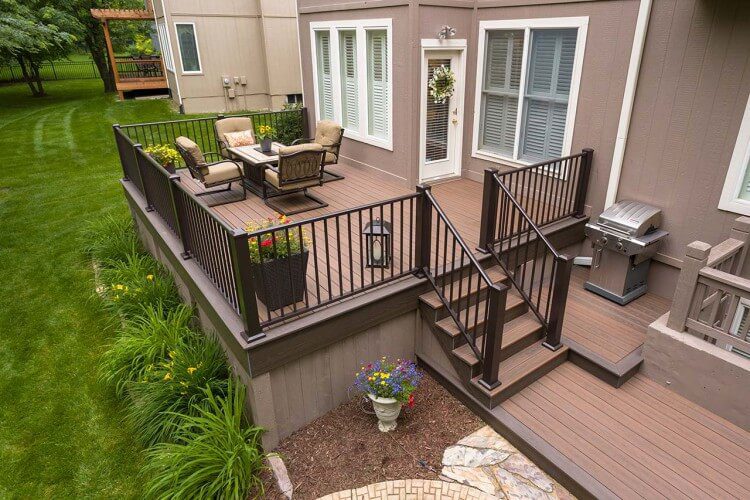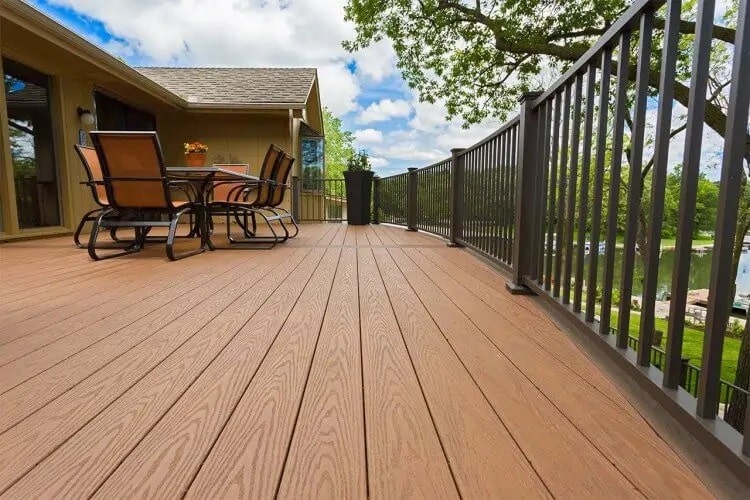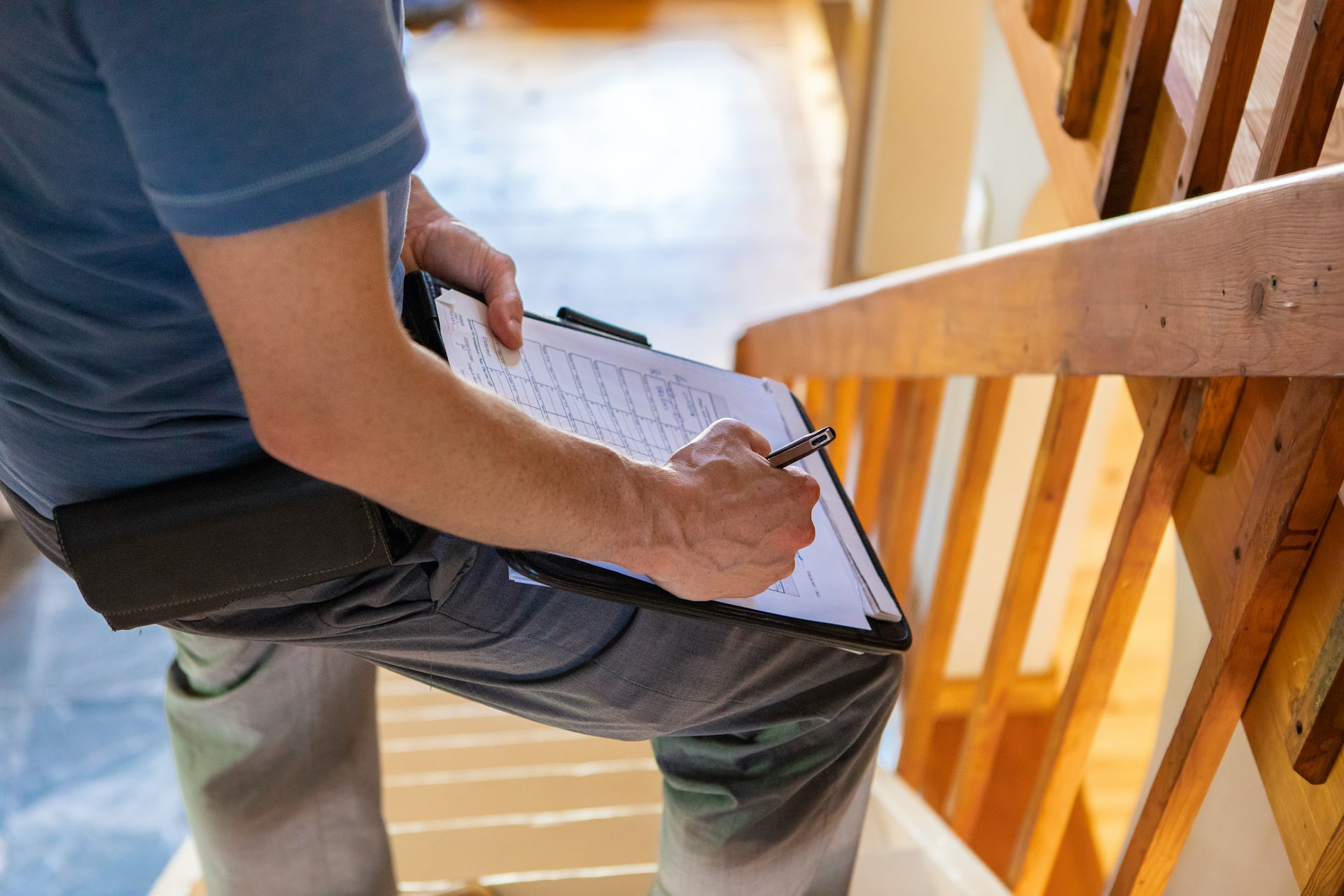Many homeowners ask us “what is the cost of building a deck per square foot?” Knowing how much a deck will cost is tricky even for a pro. There are so many variables to take into account. Materials, terrain, finishes, floor plan, and engineering are your biggest challenges. Here in the Kansas City metro, the cost basis for a capped composite deck and metal railing starts around $75.00 per sq. ft. plus $350 per step and demo/clean-up cost.
What’s The Cost of Building a Deck Yourself?
A general way to find approximately how much it would cost to build a deck yourself is to get an estimate with the finishes you want from a professional. Then follow this formula:
- Deduct 30-40% off the bottom line. That 30-40% is typically labor cost.
- Now add about 10-15% of the material cost to the estimate. The professional deck builder is getting a discount on material that would have been passed down to you had you commissioned them. Calculate the cost of any tools you don’t already have like saws, blades, bits, augers, construction dumpster, and specialty tools. Assign a rental cost to them and deduct it from DIY labor.
- Now put a price on your labor to work after hours and on weekends. Let’s say $30 per hour and you are 80% as efficient as the pros. Guess what? It’s a break-even proposition with no craftsmanship warranty.
The Average Cost of a “Budget” Deck:
The average cost for the average size deck with capped composite and metal railing in the Kansas City metro is $26,000+/-. A professional deck crew of 3 people can build it in 200+/- man-hours. So for this example:
- Deck bid $26,000 – 40% labor = $15,600 contractor material cost.
- Material cost $15,600 + 15% contractor discount=$17,940 retail material cost
- Deck bid $26,000 – $17,940 retail lumber cost = $8,060 DIY labor
- DIY labor $8,060 – $560 tool rental & dumpster = $7,500 DIY labor budget
- $7,500 labor budget/$30 per hour (your labor rate)= 250 DIY man hours
Considerations For Your Custom Deck Budget
There are many variables to consider when creating a budget for your outdoor space, but here are the main areas to pay attention to. Each one can affect the final price:
Custom Decking Materials
It’s always good to have a basic idea of your choices and the cost of each choice. Read our post on choosing the best decking materials to get a good guideline on ROI for your project. Also, consider how long you plan to live in the house.
Decking Materials by Price
From least to most expensive, they are:
- Pressure-treated
- Composite flooring
- Cedar
- Capped composite
- PVC cellular or stranded
- Tile
- Redwood
- Exotic hardwoods
- Metal/Aluminum
Deck Railing Systems by Price
Deck railing is another material consideration. Read Creative Concept & Design’s post on choosing the best deck railing systems to give you an idea of cost per type of railing. Deck railing materials from least to most expensive are:
- Pressure-treated railing
- Metal/steel railing
- Cedar railing
- Aluminum railing
- Hog panel railing
- Composite railing
- Glass railing
- Cable railing
- Custom metal railing
Consider The Terrain For Your New Custom Deck
The terrain is something that gets overlooked by most consumers. However, from a contractor’s perspective underestimating terrain will break you fast! Previously, we added a roof and 1,500+sq. ft. deck to an already beautiful Olathe, KS, home. We scoped about two weeks on the roof and about three weeks on the deck for planning. From the ground to the deck was nearly 30’ and the roof ridge was nearly 40’. It was a treed lot without much grass. Dealing with rain, steep hillside, and mud, we soon realized the five-week projection was going to be a 12-week completion. Ultimately, half of the labor cost was out of our pockets due to naivety on the terrain. The finished product was beautiful, but ever underestimate the terrain!
Budget For Deck Finishing Options
Deck finishes play a major role in the bottom line. There is an easy $30-$40 per square foot cost swing between different types of deck flooring alone. The cost difference between a no-frills black metal handrail to glass or horizontal cable can be mind-blowing. Even cedar vs. treated 6x6x10’ deck posts can differ by nearly $200. Decorative post bases or decorative columns could add thousands to the bottom line. Keep in mind that your best ROI, if you plan to sell, is “good enough”. Anything more than “good enough” is going to eat away recouping the cost of the deck.
How Floor Plan Impacts The Cost of a Custom Deck
All floor plans are not created equal. We’ve received some funny looks after telling potential clients that depending on engineering and floor plan their composite deck can range anywhere from $75-$150+ per square ft. As big of a range as this is, many factors can be influenced by value engineering. Value engineering is a systematic, organized approach to providing necessary functions in a project at the lowest cost. If you are trying to stay close to the $75 per sq. ft. range, there are a few basic concepts to value engineering your deck would include:
- Keep the deck floor plan at one elevation. Any time you add a lower level or multiple levels, cost per sq. ft. increases.
- Eliminate stairs or design a deck that requires the least amount of steps to get to grade. Stairs run around $350.+ each, depending on finishes.
- Make the length and width of the deck fall within the parameters of typical lumber lengths. Looking at the chart below 2×10 floor joists on 12” centers have a maximum span of 16’-2”.
A deck with a 16’ joist span with 2×10’s would be the same cost as a 14’-6”. The same general concept can be applied to the width. Standard composite decking lengths are 12’,16’, and 20’. If you build a deck 17’ wide you are paying for 20’ flooring and throwing away 3’ of each board. Composite deck fascia comes in 12’ lengths so it makes sense to have stairs 4’, 6’, and 12’ widths. Controlling waste is the name of the game.

Structural Considerations and Needs for Decking
Know what you intend to use the space for. We always like to err on the side of slightly over-built, however, we have had some big requests! The weight tolerances for a residential deck are the same as inside the home’s main living areas. If you have a table, chairs, grill, and sectional you can get away with the live load code tolerance for the average deck. If you plan to have a hot tub, lots of planter boxes, and unusually large groups of people it will need more integrity and oftentimes an engineer’s blessing. Remember, when you increase the live load beyond the norm, material cost and labor also increase.
Hopefully, this information helps you budget for your deck project and also helps you avoid any of the common pitfalls that you might have encountered along the way. If you need help with a deck, patio, pergola, or anything else in your backyard, schedule a consultation (or give us a call) and get your free quote today! At Creative Concepts & Design, you can count on a fair price point and quality product.



